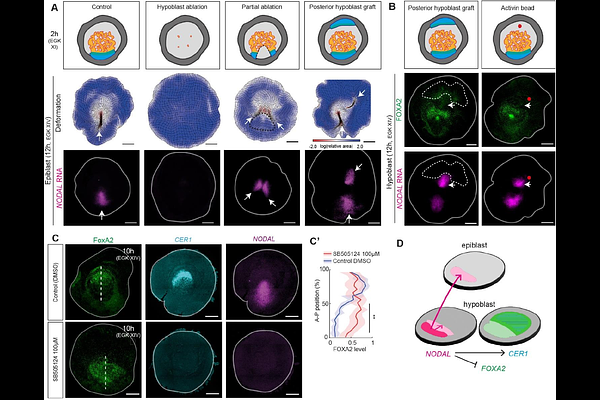Live imaging and functional characterization of the avian hypoblast redefine the mechanisms of primitive streak induction

Live imaging and functional characterization of the avian hypoblast redefine the mechanisms of primitive streak induction
Villedieu, A.; Alegria-Prevot, O.; Phan, C.; Ieda, Y.; Corson, F.; Gros, J.
AbstractIn birds and mammals, the formation of the primitive streak, the hallmark of the primary axis and site of gastrulation, is thought to occur when an anterior displacement of the hypoblast (visceral endoderm in mice) lifts its inhibition on the pos-terior epiblast, enabling the activation of NODAL signaling. Although the anterior movement of the murine visceral endo-derm is well documented, the dynamics of the avian hypoblast remain poorly understood. Here, using live imaging and quantitative image analysis, we find that the hypoblast is mechanically coupled to the epiblast and does not migrate away from its posterior end. Instead, the hypoblast moves and deforms passively, in response to the forces transmitted from the epiblast that shape the primitive streak, after its induction. Furthermore, we show that the posterior hypoblast does not exert an inhibitory effect on the epiblast but instead expresses NODAL, which activates primitive streak formation. NODAL concomitantly regulates gene expression in the hypoblast, patterning it along the anteroposterior axis. Our results thus redefine how the primary axis is established in avians, demonstrating that the displacement of the hypoblast and its con-comitant anteroposterior patterning are consequences - rather than drivers - of primitive streak induction, downstream of NODAL signaling.